
In ARTBO's 16th edition, ABRA will show in the spaces of Sketch Gallery [Cra. 23 ## 77-41, Bogotá, Cundinamarca], the work of Pedro Terán [Barcelona, 1943], Luis Romero [Caracas, 1967], Hecdwin Carreño [Caracas, 1983] and Jurgens Portillo [Maracaibo, 1990], with a selection characterised by the transversal conversation between the work of these four artists of different generations.
The particularities of the language and the media that each of the artists uses seem, at first glance, not to generate points of contact. However, both the body and everyday objects are subjects or references in the elaboration and formalisation of their works. The issue around the image, the presence of human and urban references are present in the set of works that will be shown.
Pedro Terán, historical master of the Venezuelan avant-gardes, presents four works from the Polagramas series. Polagrama is a word created by Terán to name a series in which he works with sequences of polaroids, initially developed in England and presented for the first time in 1979 at the renowned Arnolfini Center for Contemporary Art, in Bristol. Polagrama: a snapshot that photographs a space or a person; followed by another snapshot that photographs that snapshot; and again an image of another image, until forming a succession, a tautology, in which what was originally photographed has disappeared to give way to a new construction, structured entirely from the photographic procedure.
Luis Romero finds in objects and images of the city a constellation to skillfully build, from references such as the bars, walls or found objects, a system of individual codes that integrate the references of the history of art and the living structures of everyday life in an extensive iconographic essay.
Hecdwin Carreño presents a set of realistic paintings of people who are close to him. Floating heads with closed eyes, body fragments and characters that seem to want to hide. This set of works are part of his series Inhuman Hunting. His paintings, volumes of light and shadows speak to us of the dramas of separation, mutilation, alienation or uprooting.
For Jurgens Portillo, reality is traversed by his gaze and by his need to adapt it to the canvas. What is real for Portillo is based on scenes and objects that give an account of the manifest poverty in Venezuela; his gaze is marginal and he goes to what we do not want to make visible to talk about a moment and a context. In his works the human presence comes to life through objects. These paintings slap us in the face for the harshness with which they expose what we see, read and live daily.
ABRA is a gallery dedicated to contemporary art, founded in January 2016 by Melina Fernández Temes and Luis Romero. Located at Centro de Arte Los Galpones, a cultural complex in Caracas/Venezuela, the gallery has two exhibition halls.
Since its beginnings, ABRA understands itself as a multidisciplinary and open space, where the curious audience can get together and dialogue during frequent meetings, dedicated to multiple creative expressions. It works as a gallery, a project space, a workshop for visiting artists, a space for talks and courses, as well as screenings and concerts.
In ABRA’s spaces over fifty solo and group exhibitions have taken place until now, as well as open encounters –talks, guided tours, poetry readings, contemporary dance presentations and performances–, several educational workshops, and concert series.
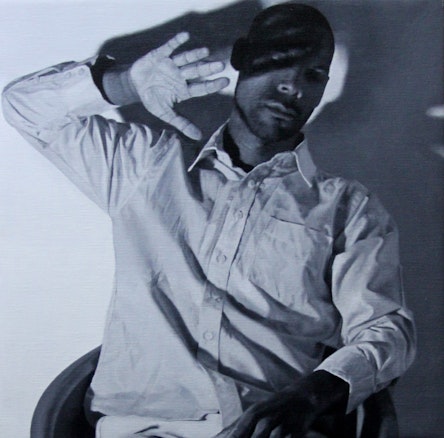
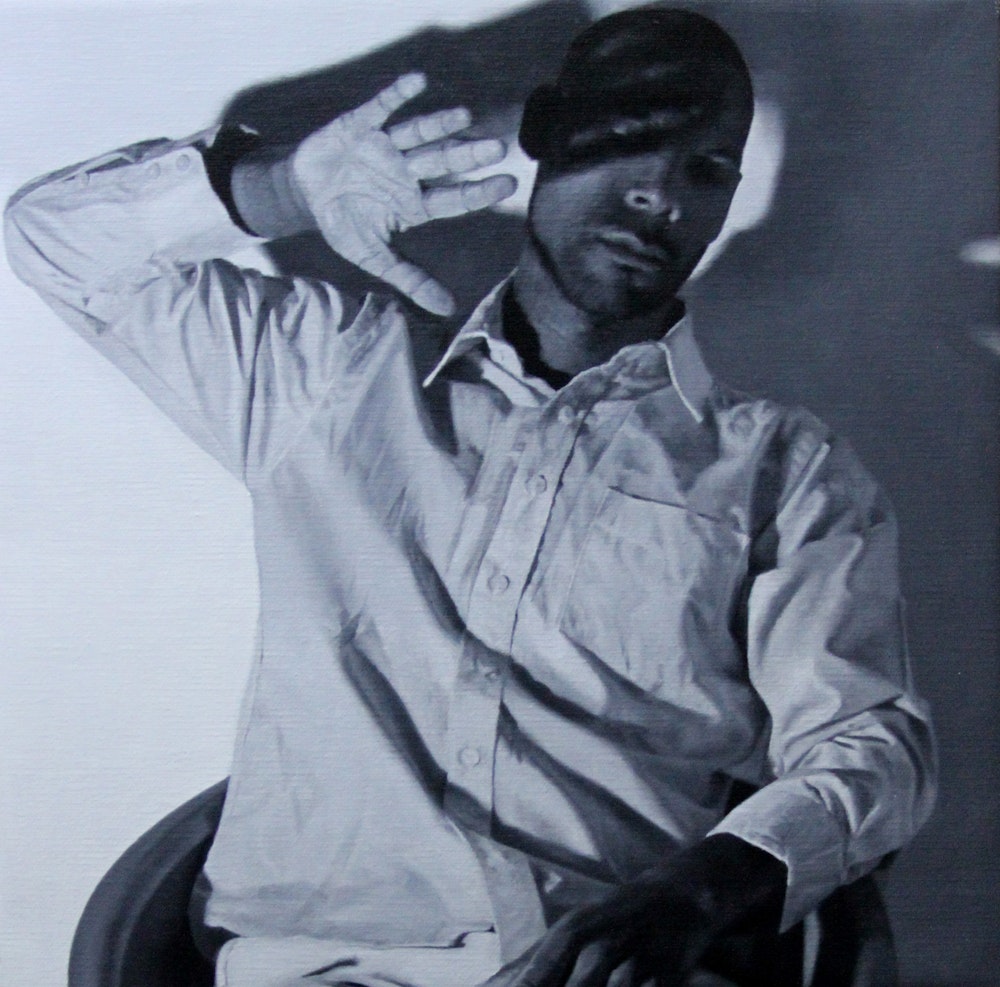
In recent years, I have been reflecting on my production processes and, therefore, on my relationship with painting, trying to establish what is its interest or purpose. I don't think there are issues where the word is the real driver of the meaning of my work. At that very moment the act of painting begins to make sense, it's all about that gesture. I think that -led by different situations-, I have understood that the place of the word in our society, and more in this time, it has been distorted: it is empty. When I speak of the word I mean the discourse, the prevailing rhetoric. Because of that same vulnerability, I decide, as an act of a political nature, to concentrate on the gesture. In that search of trying to generate an almost performative posture, that almost liturgical action of making pieces where the time spent is a fundamental factor, a symbolic triggering element. I begin to understand the immediacy that surrounds me, or to think of contemplation and attention as an indispensable tool for understanding. For the moment, this is a substantial part of my work. I try to establish a clear reading in the relationship of the processes with the discursiveness of the work, that is, to broaden the reading, to deepen, not only in the object, or in the image, but in the way behind the work, the honesty between the word and the action. I think that painting has become relevant to me, to think of it as a primitive gesture, to intertwine it with the primitive, the anthropological. With it I understand the plausibility and I narrate with her my plausibility. Photography is essential in my work, its language is always relevant. Photography today demands the certainty of the truth, today we know that it is as vulnerable as words.” Artist review
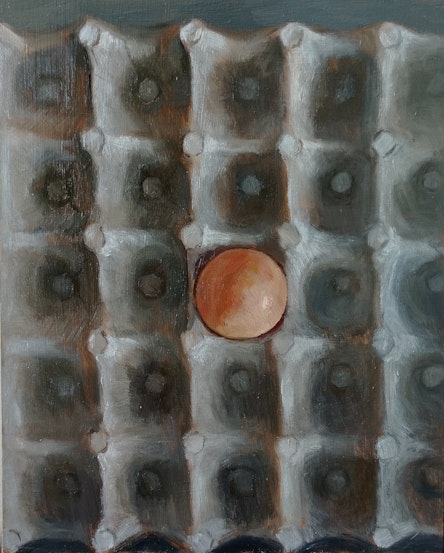
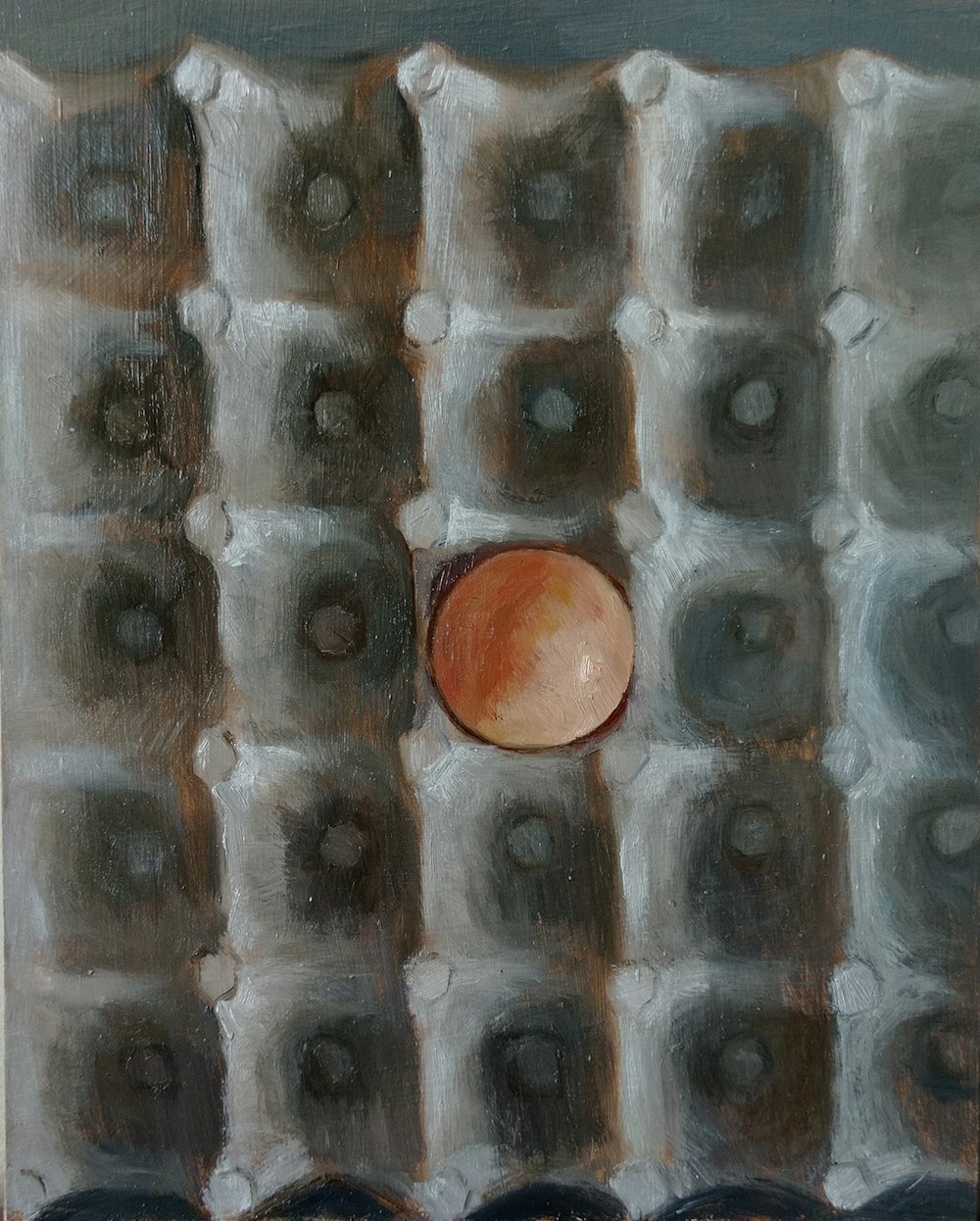
Excerpt from the curatorial text of Carlos E. Palaces for the exhibition “Lo sencillo y cotidiano” of Jurgens Portillo in AbraCaracas. March-April 2020 "Will it be necessary to specify, looking at the paintings by Jurgens Portillo (Maracaibo, 1990), that they are realistic? Realism is misleading like a trompe l'oeil, by the way the greatest invention of painting on the real: mockery at sight and It makes us believe that we are looking at reality when it is an illusory effect of the pictorial. We think that we see the reverse side of a painting and our proximity to the canvas reveals well applied plastic material. What we believed was a label attached to the frame of a turned painting, It turned out that they were subtle brush strokes. For centuries, the trompe l'oeil was the best demonstration of a painter's talent. The more skillful, the greater the trap to the eye, the better the trompe l'oeil. Portillo's paintings are connected with the long and dense tradition philosophical of art in which the veracity of the real is discussed on the world of appearances, in which the artistic work is found. It goes without saying that reality is crossed by the artist's gaze and by the need to adapt it to the canvas. Loreal para Portillo is based on scenes and objects that account for the manifest poverty of Venezuela. These paintings slap us in the face for the harshness with which they expose what we see, read and live daily. It would be trivial to compare them with the tradition of still lifes, landscapes and genre scenes of modern painting. It is obvious that they belong to this genealogy, but it is also true that their place is a nefarious imaginary that has come to the political reality of our last and fateful years. . Lunch does not correspond to the feasts of the seventeenth century Dutch painters or even to the austere fried eggs that Diego Velázquez masterfully painted in 1618. Jurgens Portillo brings to life the bad reality that we had to live in these last two decades. The feeling that it generates in us as spectators is that we do not deserve the daily life into which we have been indolently thrown. His paintings are the other side of the luminous landscapes of Manuel Cabré from the Country Club of Caracas. We could say by curling the curl, that if Ávila corresponds to figure as the landscape of the first Venezuelan modernity, that of the brilliant first years of the last century, these paintings by Portillo will hopefully correspond to the place of the ominous and gloomy landscape of the Venezuela of the first years of the XXI century."
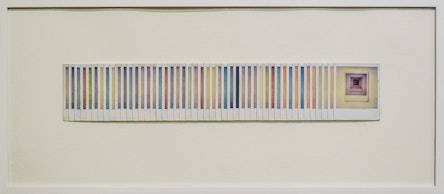
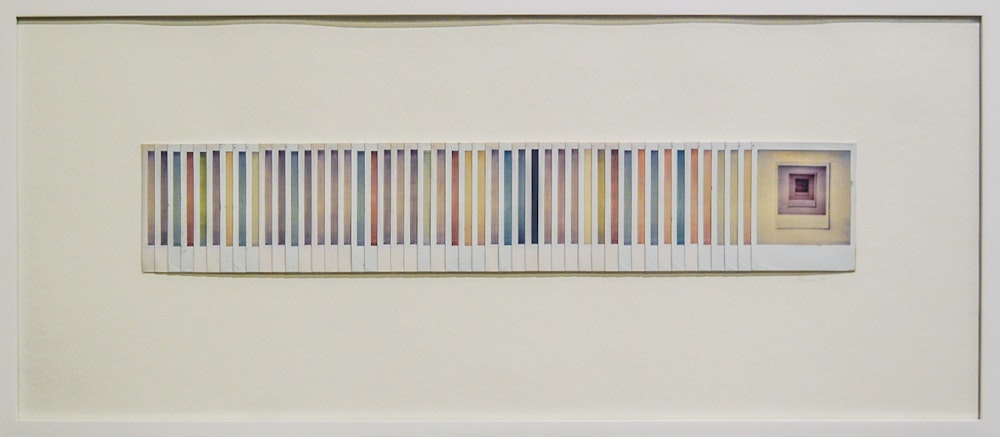
Informative capsule written by researcher Costanza De Rogatis about Pedro Terán's Polagrams, for our ArchivoAbierto's project, Revisions: "Polagrama. A word created by Pedro Terán to name a series in which he works with sequences of Polaroids, developed in England and presented for the first time in 1979 at the renowned Arnolfini Center for Contemporary Art in Bristol. Polagram: a snapshot that photographs a space; followed by another snapshot that photographs that snapshot; and again an image of another image, until forming a succession, a tautology, in which what was originally photographed has disappeared to give way to a new construction, structured entirely from the photographic procedure. Or a space, the same space, and in this way, the resulting images, the resulting objects, supported one over the other, they are slid slightly to allow to see only one edge of that changing light from day to day, night that is glimpsed on its surface. A new visual construction, a staircase of color, erected through time and light, the variables that underpin photography."

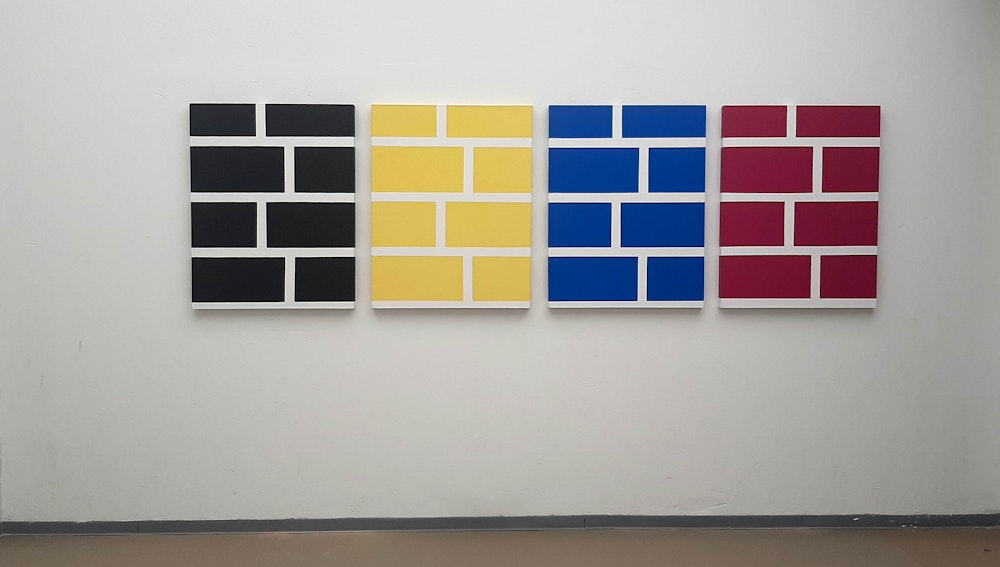
"Through an effective economy of resources and a variable extrategy, Romero skillfully articulates a system of individual codes as constant records of his practice, by integrating the referents of art history, the living structures of his daily life, the word as an idea and emptiness as an iconographic essay, all of this assembled to a construction of diachronic circulation that develops in an open system of creative constellations. As a consequence of a relational and dialogical thought, his work undertakes an incessant revision of the various principles of perception, thus as well as the conceptualization of contextual realities. From his earliest works, plastic discourse is constructed from a punctual and persevering compilation and recycling of images and objects, texts and fonts found that –from the use of diverse supports and mixed techniques such as such as drawing, graphic arts, painting, collage and assembly-, they display an encyclopedic universe of relationships that come from the domestic sphere and the urban sphere linked, in the same way, to a biographical logic. However, the fragmented story that is organized between the word, the image and the space transcends personal experience to advance in the construction of an abstract and self-referential imaginary that is born from the imagination." Fragment of the curatorial text by Ruth Auerbach for the exhibition C (r)udo 2018
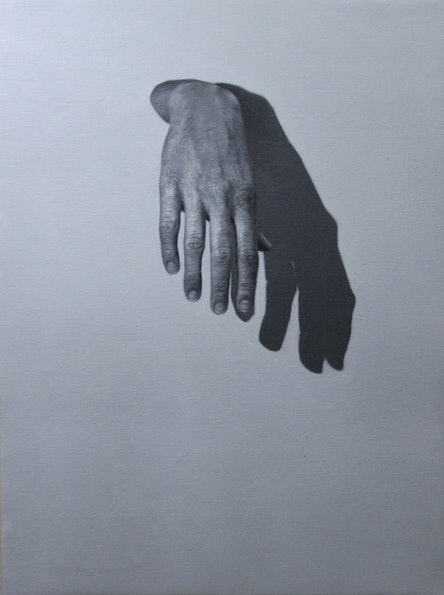
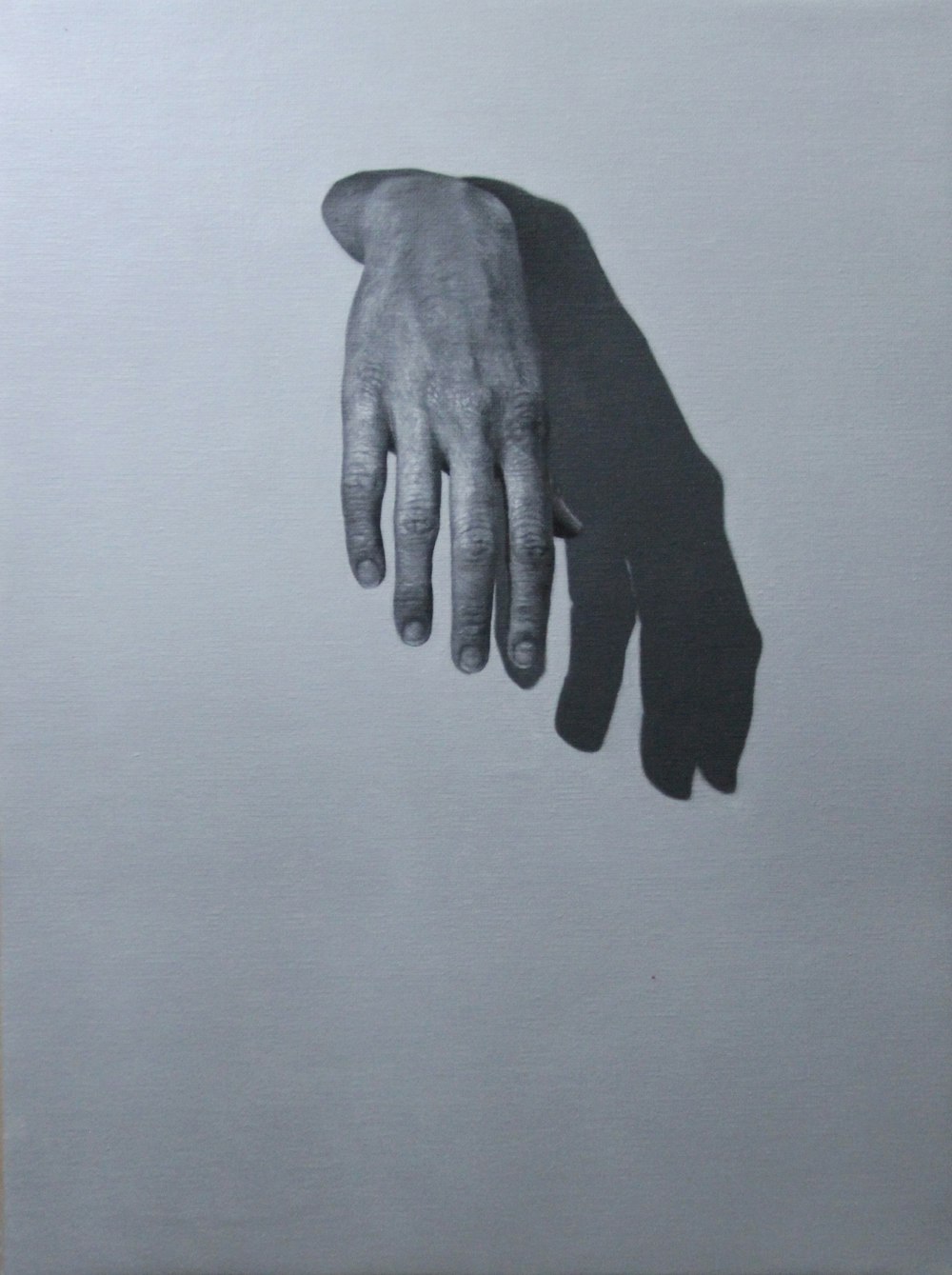
In recent years, I have been reflecting on my production processes and, therefore, on my relationship with painting, trying to establish what is its interest or purpose. I don't think there are issues where the word is the real driver of the meaning of my work. At that very moment the act of painting begins to make sense, it's all about that gesture. I think that -led by different situations-, I have understood that the place of the word in our society, and more in this time, it has been distorted: it is empty. When I speak of the word I mean the discourse, the prevailing rhetoric. Because of that same vulnerability, I decide, as an act of a political nature, to concentrate on the gesture. In that search of trying to generate an almost performative posture, that almost liturgical action of making pieces where the time spent is a fundamental factor, a symbolic triggering element. I begin to understand the immediacy that surrounds me, or to think of contemplation and attention as an indispensable tool for understanding. For the moment, this is a substantial part of my work. I try to establish a clear reading in the relationship of the processes with the discursiveness of the work, that is, to broaden the reading, to deepen, not only in the object, or in the image, but in the way behind the work, the honesty between the word and the action. I think that painting has become relevant to me, to think of it as a primitive gesture, to intertwine it with the primitive, the anthropological. With it I understand the plausibility and I narrate with her my plausibility. Photography is essential in my work, its language is always relevant. Photography today demands the certainty of the truth, today we know that it is as vulnerable as words.” Artist review

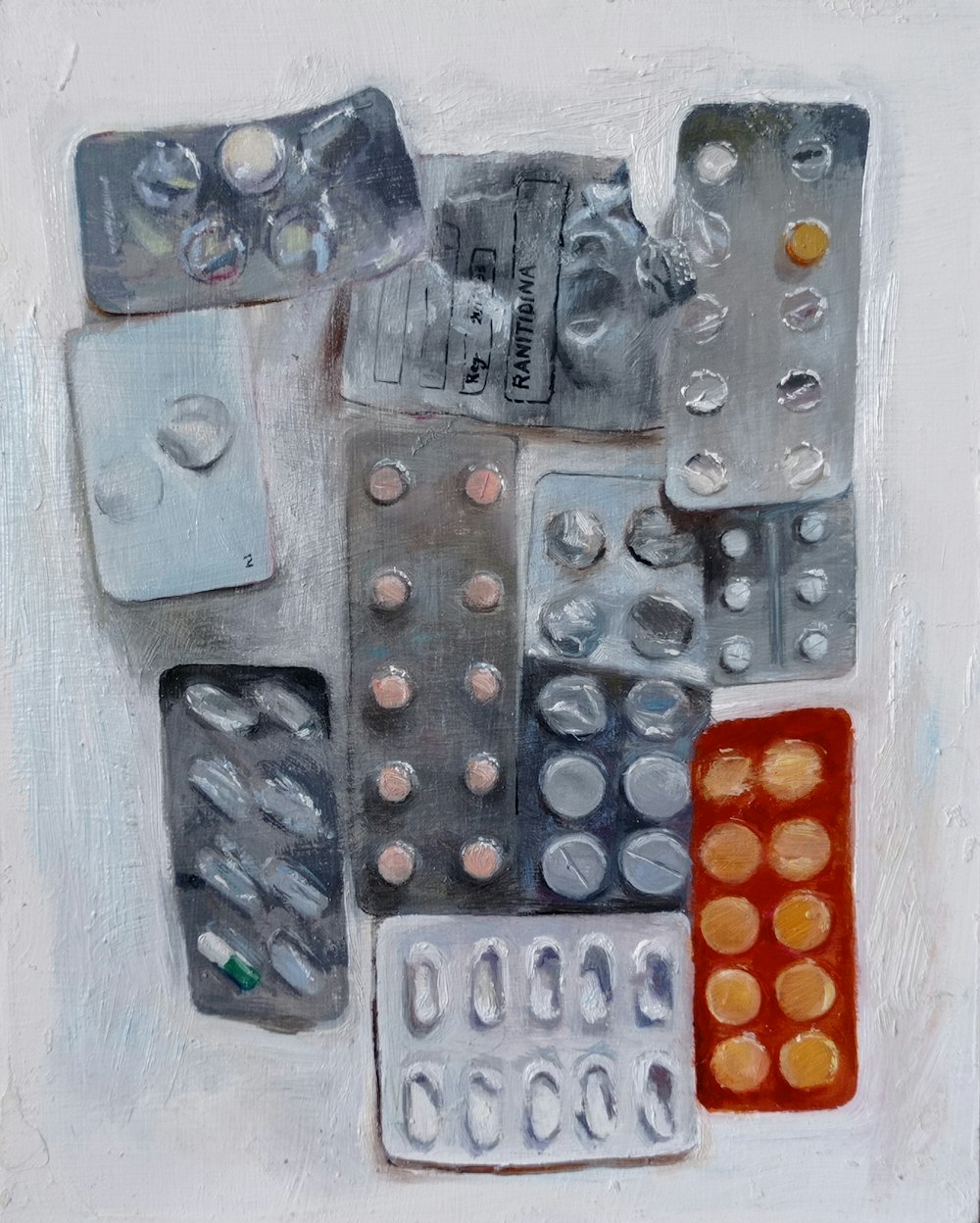
Excerpt from the curatorial text of Carlos E. Palaces for the exhibition “Lo sencillo y cotidiano” of Jurgens Portillo in AbraCaracas. March-April 2020 "Will it be necessary to specify, looking at the paintings by Jurgens Portillo (Maracaibo, 1990), that they are realistic? Realism is misleading like a trompe l'oeil, by the way the greatest invention of painting on the real: mockery at sight and It makes us believe that we are looking at reality when it is an illusory effect of the pictorial. We think that we see the reverse side of a painting and our proximity to the canvas reveals well applied plastic material. What we believed was a label attached to the frame of a turned painting, It turned out that they were subtle brush strokes. For centuries, the trompe l'oeil was the best demonstration of a painter's talent. The more skillful, the greater the trap to the eye, the better the trompe l'oeil. Portillo's paintings are connected with the long and dense tradition philosophical of art in which the veracity of the real is discussed on the world of appearances, in which the artistic work is found. It goes without saying that reality is crossed by the artist's gaze and by the need to adapt it to the canvas. Loreal para Portillo is based on scenes and objects that account for the manifest poverty of Venezuela. These paintings slap us in the face for the harshness with which they expose what we see, read and live daily. It would be trivial to compare them with the tradition of still lifes, landscapes and genre scenes of modern painting. It is obvious that they belong to this genealogy, but it is also true that their place is a nefarious imaginary that has come to the political reality of our last and fateful years. . Lunch does not correspond to the feasts of the seventeenth century Dutch painters or even to the austere fried eggs that Diego Velázquez masterfully painted in 1618. Jurgens Portillo brings to life the bad reality that we had to live in these last two decades. The feeling that it generates in us as spectators is that we do not deserve the daily life into which we have been indolently thrown. His paintings are the other side of the luminous landscapes of Manuel Cabré from the Country Club of Caracas. We could say by curling the curl, that if Ávila corresponds to figure as the landscape of the first Venezuelan modernity, that of the brilliant first years of the last century, these paintings by Portillo will hopefully correspond to the place of the ominous and gloomy landscape of the Venezuela of the first years of the XXI century."
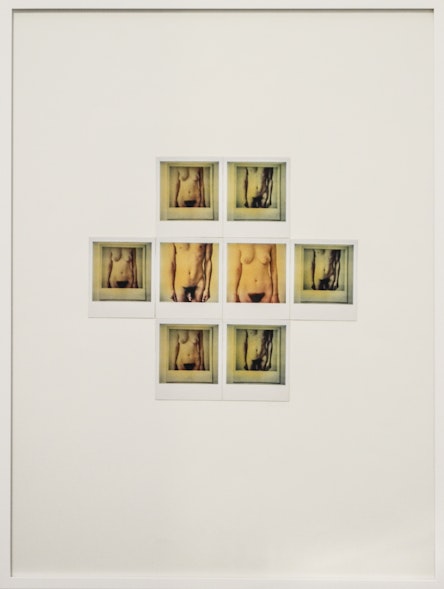

Informative capsule written by researcher Costanza De Rogatis about Pedro Terán's Polagrams, for our ArchivoAbierto's project, Revisions: "Polagrama. A word created by Pedro Terán to name a series in which he works with sequences of Polaroids, developed in England and presented for the first time in 1979 at the renowned Arnolfini Center for Contemporary Art in Bristol. Polagram: a snapshot that photographs a space; followed by another snapshot that photographs that snapshot; and again an image of another image, until forming a succession, a tautology, in which what was originally photographed has disappeared to give way to a new construction, structured entirely from the photographic procedure. Or a space, the same space, and in this way, the resulting images, the resulting objects, supported one over the other, they are slid slightly to allow to see only one edge of that changing light from day to day, night that is glimpsed on its surface. A new visual construction, a staircase of color, erected through time and light, the variables that underpin photography."
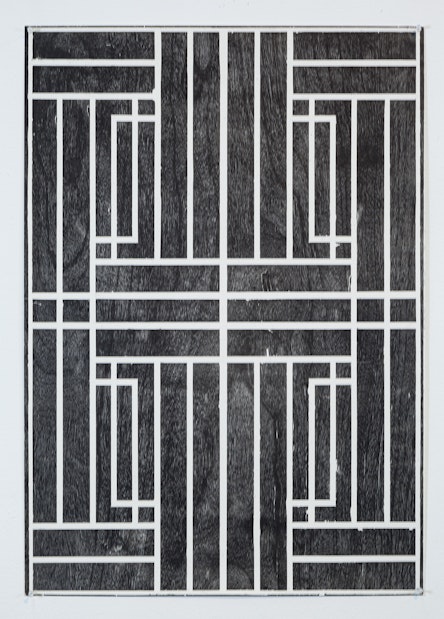
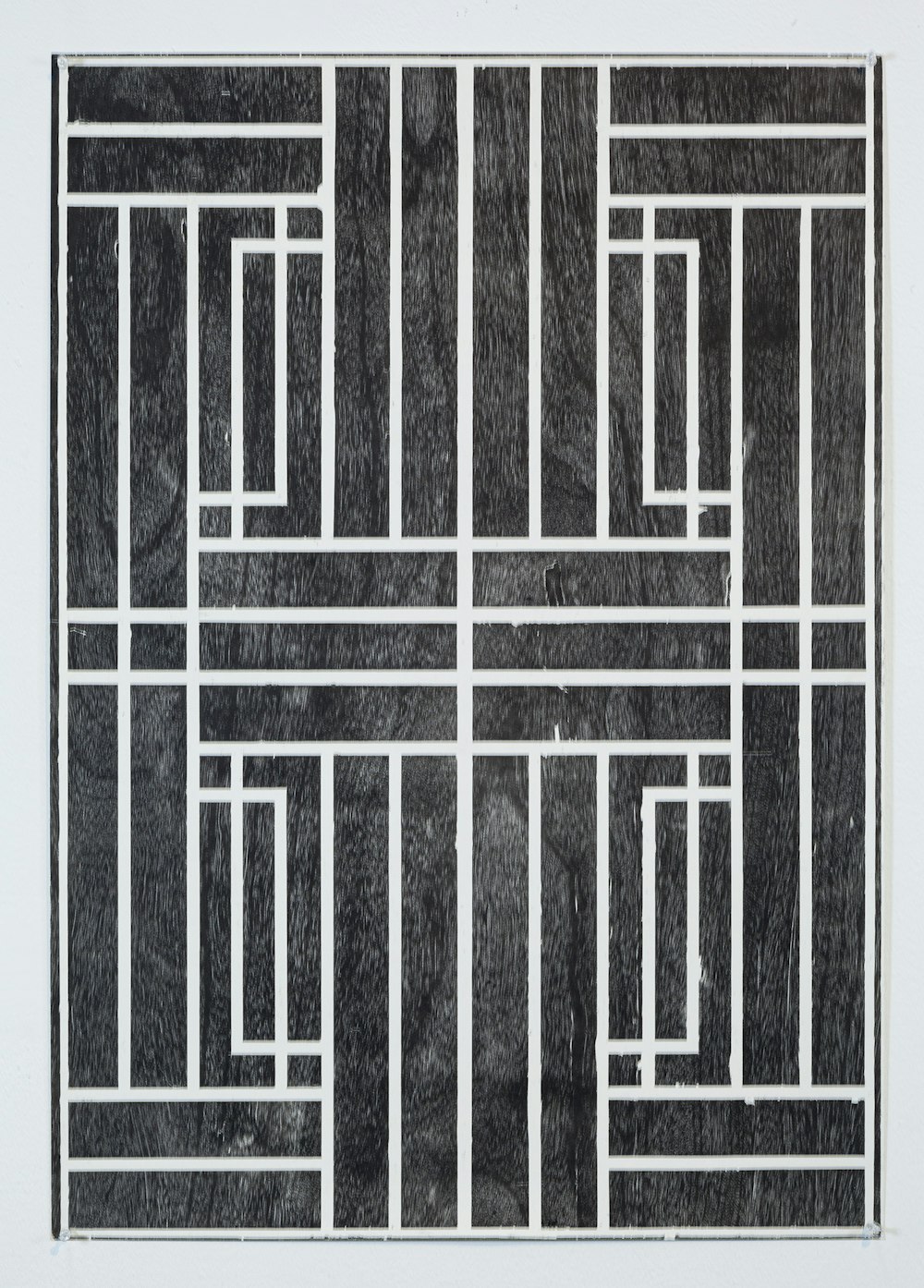
"Through an effective economy of resources and a variable extrategy, Romero skillfully articulates a system of individual codes as constant records of his practice, by integrating the referents of art history, the living structures of his daily life, the word as an idea and emptiness as an iconographic essay, all of this assembled to a construction of diachronic circulation that develops in an open system of creative constellations. As a consequence of a relational and dialogical thought, his work undertakes an incessant revision of the various principles of perception, thus as well as the conceptualization of contextual realities. From his earliest works, plastic discourse is constructed from a punctual and persevering compilation and recycling of images and objects, texts and fonts found that –from the use of diverse supports and mixed techniques such as such as drawing, graphic arts, painting, collage and assembly-, they display an encyclopedic universe of relationships that come from the domestic sphere and the urban sphere linked, in the same way, to a biographical logic. However, the fragmented story that is organized between the word, the image and the space transcends personal experience to advance in the construction of an abstract and self-referential imaginary that is born from the imagination." Fragment of the curatorial text by Ruth Auerbach for the exhibition C (r)udo 2018

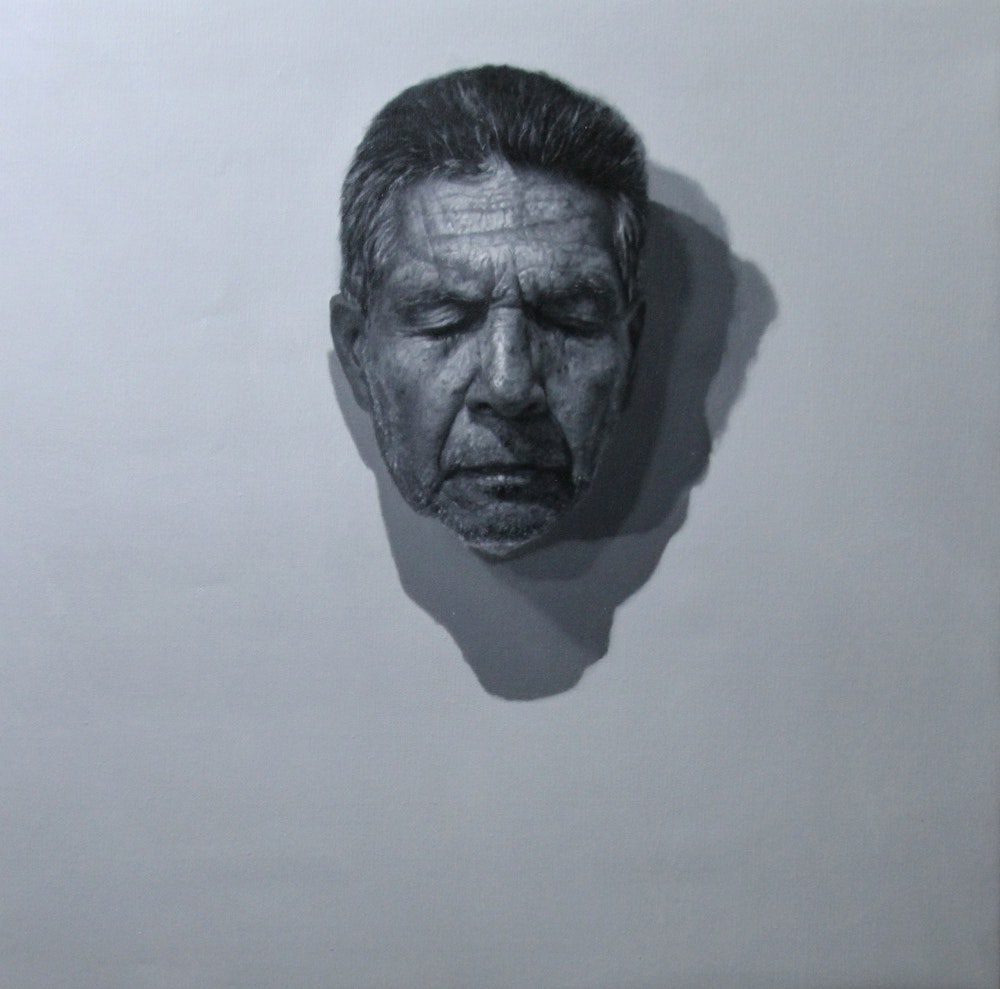
In recent years, I have been reflecting on my production processes and, therefore, on my relationship with painting, trying to establish what is its interest or purpose. I don't think there are issues where the word is the real driver of the meaning of my work. At that very moment the act of painting begins to make sense, it's all about that gesture. I think that -led by different situations-, I have understood that the place of the word in our society, and more in this time, it has been distorted: it is empty. When I speak of the word I mean the discourse, the prevailing rhetoric. Because of that same vulnerability, I decide, as an act of a political nature, to concentrate on the gesture. In that search of trying to generate an almost performative posture, that almost liturgical action of making pieces where the time spent is a fundamental factor, a symbolic triggering element. I begin to understand the immediacy that surrounds me, or to think of contemplation and attention as an indispensable tool for understanding. For the moment, this is a substantial part of my work. I try to establish a clear reading in the relationship of the processes with the discursiveness of the work, that is, to broaden the reading, to deepen, not only in the object, or in the image, but in the way behind the work, the honesty between the word and the action. I think that painting has become relevant to me, to think of it as a primitive gesture, to intertwine it with the primitive, the anthropological. With it I understand the plausibility and I narrate with her my plausibility. Photography is essential in my work, its language is always relevant. Photography today demands the certainty of the truth, today we know that it is as vulnerable as words.” Artist review
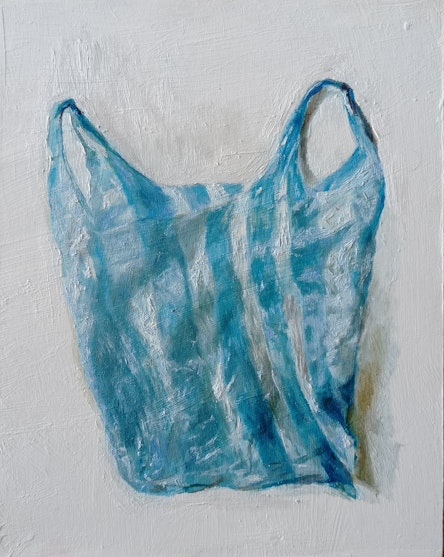

Excerpt from the curatorial text of Carlos E. Palaces for the exhibition “Lo sencillo y cotidiano” of Jurgens Portillo in AbraCaracas. March-April 2020 "Will it be necessary to specify, looking at the paintings by Jurgens Portillo (Maracaibo, 1990), that they are realistic? Realism is misleading like a trompe l'oeil, by the way the greatest invention of painting on the real: mockery at sight and It makes us believe that we are looking at reality when it is an illusory effect of the pictorial. We think that we see the reverse side of a painting and our proximity to the canvas reveals well applied plastic material. What we believed was a label attached to the frame of a turned painting, It turned out that they were subtle brush strokes. For centuries, the trompe l'oeil was the best demonstration of a painter's talent. The more skillful, the greater the trap to the eye, the better the trompe l'oeil. Portillo's paintings are connected with the long and dense tradition philosophical of art in which the veracity of the real is discussed on the world of appearances, in which the artistic work is found. It goes without saying that reality is crossed by the artist's gaze and by the need to adapt it to the canvas. Loreal para Portillo is based on scenes and objects that account for the manifest poverty of Venezuela. These paintings slap us in the face for the harshness with which they expose what we see, read and live daily. It would be trivial to compare them with the tradition of still lifes, landscapes and genre scenes of modern painting. It is obvious that they belong to this genealogy, but it is also true that their place is a nefarious imaginary that has come to the political reality of our last and fateful years. . Lunch does not correspond to the feasts of the seventeenth century Dutch painters or even to the austere fried eggs that Diego Velázquez masterfully painted in 1618. Jurgens Portillo brings to life the bad reality that we had to live in these last two decades. The feeling that it generates in us as spectators is that we do not deserve the daily life into which we have been indolently thrown. His paintings are the other side of the luminous landscapes of Manuel Cabré from the Country Club of Caracas. We could say by curling the curl, that if Ávila corresponds to figure as the landscape of the first Venezuelan modernity, that of the brilliant first years of the last century, these paintings by Portillo will hopefully correspond to the place of the ominous and gloomy landscape of the Venezuela of the first years of the XXI century."
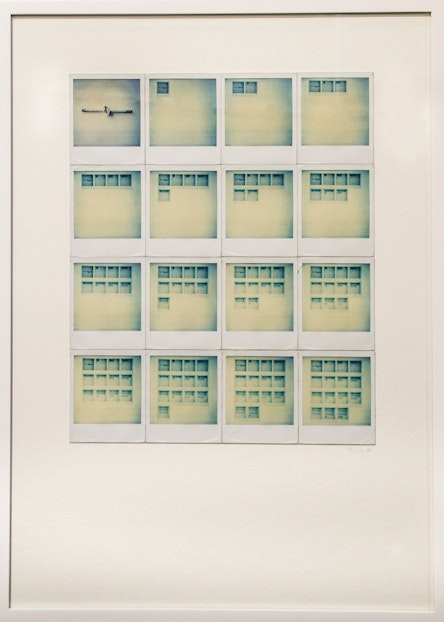

Informative capsule written by researcher Costanza De Rogatis about Pedro Terán's Polagrams, for our ArchivoAbierto's project, Revisions: "Polagrama. A word created by Pedro Terán to name a series in which he works with sequences of Polaroids, developed in England and presented for the first time in 1979 at the renowned Arnolfini Center for Contemporary Art in Bristol. Polagram: a snapshot that photographs a space; followed by another snapshot that photographs that snapshot; and again an image of another image, until forming a succession, a tautology, in which what was originally photographed has disappeared to give way to a new construction, structured entirely from the photographic procedure. Or a space, the same space, and in this way, the resulting images, the resulting objects, supported one over the other, they are slid slightly to allow to see only one edge of that changing light from day to day, night that is glimpsed on its surface. A new visual construction, a staircase of color, erected through time and light, the variables that underpin photography."


"Through an effective economy of resources and a variable extrategy, Romero skillfully articulates a system of individual codes as constant records of his practice, by integrating the referents of art history, the living structures of his daily life, the word as an idea and emptiness as an iconographic essay, all of this assembled to a construction of diachronic circulation that develops in an open system of creative constellations. As a consequence of a relational and dialogical thought, his work undertakes an incessant revision of the various principles of perception, thus as well as the conceptualization of contextual realities. From his earliest works, plastic discourse is constructed from a punctual and persevering compilation and recycling of images and objects, texts and fonts found that –from the use of diverse supports and mixed techniques such as such as drawing, graphic arts, painting, collage and assembly-, they display an encyclopedic universe of relationships that come from the domestic sphere and the urban sphere linked, in the same way, to a biographical logic. However, the fragmented story that is organized between the word, the image and the space transcends personal experience to advance in the construction of an abstract and self-referential imaginary that is born from the imagination." Fragment of the curatorial text by Ruth Auerbach for the exhibition C (r)udo 2018